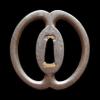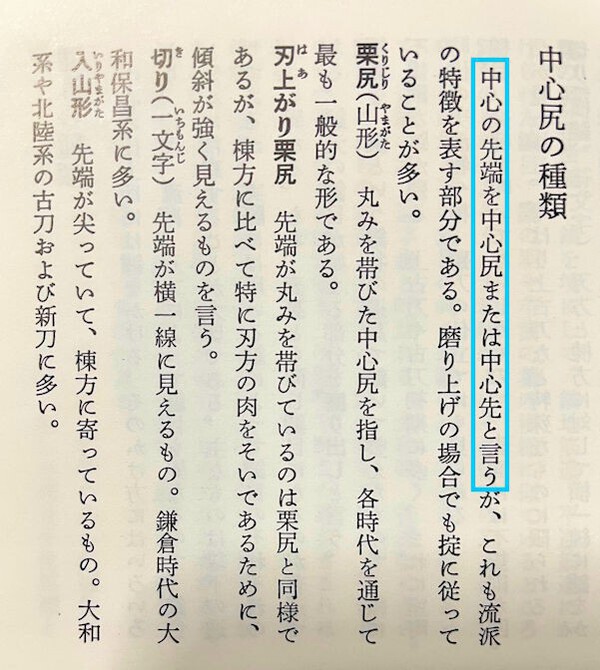-
Posts
4,026 -
Joined
-
Last visited
-
Days Won
63
Content Type
Profiles
Forums
Events
Store
Downloads
Gallery
Everything posted by Nobody
-
The descriptions are the owner’s name and the date of issue. The format was used until March 2012.
-
FYI, comparison of swords without a hi and with a hi. Watch from 5:30. 日本刀に彫ってあるミゾ(樋)はどんな意味があるの?溝がある刀とない刀の違い(What does the groove on a Japanese sword mean?)
-
正宗二十代孫 – Masamune’s 20th generation descendant 相州住綱廣 – Soshu ju Tsunahiro Might be this smith? 日本刀 短刀 正宗二十代孫 相州住綱広 (十三代)|日本刀 刀剣販売 e-sword
-
"藤四郎" usually reads Tōshirō.
-
The seller’s description seems to be correct. 脇指 無銘 (兼房) - Wakizashi, unsigned ((Thought to be) Kanefusa) (切付銘) - Kiritsukemei 寛永十九年三月ノ初五 – Kanei 19th year (=1642), the 5th day of the 3rd month 於武州江城□脇毛深守土中五寸 – At Edo in Bushu, cut through shoulders and into the mound by 5-sun (=15 cm). 石原小□彦成正(花押) - Ishihara ??? Narimasa/Shigemasa (+ kao) 長一尺二寸九分強 – Length: A little more than 1-shaku, 2-sun, 9-bu
-
信光 - Nobumitsu
-
I have not seen his works. So, I am not sure but maybe this man. Ref. Louie Mills (1944-2018) – Crossed Heart Forge
-
Ref.
-
Though it may not be necessary to say, a genuine torokusho does not proof that the mei on the sword is genuine.
-
Maybe, 正阿弥包矩 - Shoami Kanenori
-
FYI: 「心肝を寒からしむる(しんかんをさむからしむる)」の意味や使い方 わかりやすく解説 Weblio辞書
-
I cannot decipher several parts, and I tried a guess work. I am especially unsure about the blue parts. 此刀ハ我か珍蔵月山貞一之作也□を脱すれハ電光 閃き星芒将ゐ人をして寒からしむ然れども装鞘素朴 鐔鐵剛強維新志士が剱撃闘争活躍ニ実 用せし物たること歴然たり吾其の手澤を愛惜して 改造せす後人をして其間を偲び士気を養ふる資□□ と云□ 昭和三年十月吉日 石川水心先識す This sword is my rare collection made by Gassan Sadakazu. If it is drawn, lightning flashes and sparkles scatter, and it makes a man frightened. However, its fittings/scabbard are simple and iron tsuba is firm. It is obvious that it was practically used in sword battles by samurai of the restoration. I have a deep affection for this favorite item, and I will leave it unrestored to make later generations think of that era and raise their morales. Showa 3rd year, a lucky day in 10th month Ishikawa Suishin foresees.
-
-
Ref.
-

Box inscription for tea ceremony tea container
Nobody replied to Graybadger's topic in Translation Assistance
In the left circle, 不審菴 – Fushin’an Ref. OMOTESENKE Fushin'an:The name Fushin'an -
December 1943
-
Generally, the ashes are put in an urn. There is a space to store the urn under the tomb. The constructions of tombs are varied. The attached image shows some examples. You might need a mason to open/close the tomb and to waterproof.
-
I think that the definitions of 茎先 (nakagosaki) and 茎尻 (nakagojiri) are wrong. Again, Kokan Nagayama says that nakagosaki and nakagojiri mean the same position. The attached image shows the explanation, though this part is not faithfully translated in the English version.
-
I understand your confusion. The referred Japanese writing is poorly written. Kokan Nagayama explains the terms a little clearer in “The connoisseur’s Book of Japanese Swords”. According to his explanation, it should be noted that the definition of Ubu nakago includes “ … provided that the blade’s shape and length are changed only slightly, the sword is still regarded as an ubu nakago”.
-

Second Lieutenant Fuku-? - Name on Holster
Nobody replied to Conway S's topic in Translation Assistance
福光 - Fukumitsu -

Type 19 cavalry sword mon identification
Nobody replied to Mark P's topic in General Nihonto Related Discussion
It is not a mon but a family name 松尾 - Matsuo.








